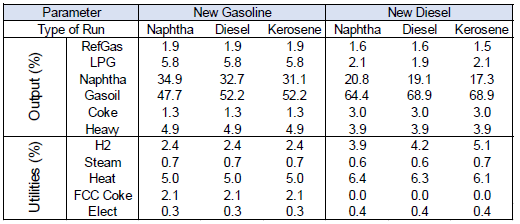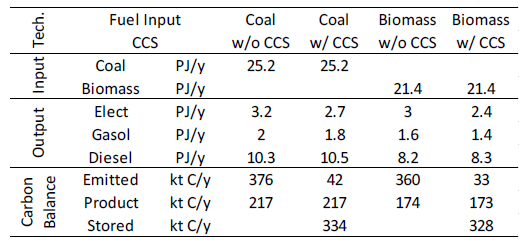Liquid fuels - COFFEE-TEA: Difference between revisions
m (Rineke Oostenrijk moved page Liquid fuels - TEA to Liquid fuels - COFFEE-TEA without leaving a redirect: Text replacement - " - TEA" to " - COFFEE-TEA") |
m (Text replacement - "IsDocumentationOf=TEA" to "IsDocumentationOf=COFFEE-TEA") |
||
| Line 1: | Line 1: | ||
{{ModelDocumentationTemplate | {{ModelDocumentationTemplate | ||
|IsDocumentationOf=TEA | |IsDocumentationOf=COFFEE-TEA | ||
|DocumentationCategory=Liquid fuels | |DocumentationCategory=Liquid fuels | ||
}} | }} | ||
Latest revision as of 12:58, 6 September 2019
| Corresponding documentation | |
|---|---|
| Previous versions | |
| Model information | |
| Model link | |
| Institution | COPPE/UFRJ (Cenergia), Brazil, http://www.cenergialab.coppe.ufrj.br/. |
| Solution concept | General equilibrium (closed economy) |
| Solution method | The COFFEE model is solved through Linear Programming (LP). The TEA model is formulated as a mixed complementary problem (MCP) and is solved through Mathematical Programming System for General Equilibrium -- MPSGE within GAMS using the PATH solver. |
| Anticipation | |
In general liquid fuels are produced by the processing of crude oils carried out in refineries. To evaluate the refining sector to evaluate such a complex sector, a detailed methodology was used, not commonly used in global IAMs. The capacities of all existing process units were compiled by ogj2011 and a refining simulation tool called CAESER (Carbon and Energy Strategy Analysis for Refineries), described in guedes2015. With this tool, the oil products production profile and the utilities consumption for each region were estimated, albeit in a simplified form.
One major advantage of the approach used in this study, besides the detailing of energy products and consistent energy consumption associated, is that it allows estimating the CO2 emissions related to process emissions, such as those associated with Hydrogen Generation Unit (HGU) and Fluid Catalytic Cracking (FCC) units.
For future expansions, the approach was to provide two refinery configurations: a high naphtha yield greenfield refinery and a high diesel yield greenfield refinery. The proposed refinery schemes (presented in <xr id="fig:Refineries"/>) were optimized in CAESER to provide the highest yield possible for the desired main product.
<figure id="fig:Refineries">
</figure>
Besides oil products, two alternative sources of liquid fuels are considered: synthetic fuels and biofuels. As for synthetic fuels, two main sources of fuel are considered, both with or without carbon capture: coal and biomass. The technical parameters and carbon balance for technologies considered are presented in the <xr id="fig:Gasification"/>.
<figure id="fig:Gasification">
</figure>

